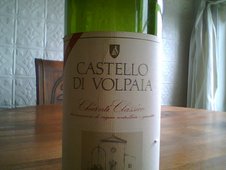
They'll put wax on anything at that distillery.

The draft selections are the usual. I chose a Sam Adams. Daniella, the bartender, scrunches up her pretty face. "The Sam Adams is kinda messed up." Messed up? "Mm-mm." The lager's specific malady is not elaborated upon. OK. How about a Stella? Daniella moves briefly as if to draw a glass, but then stops and scrunches up her face. The Stella is messed up, too? "Mm-mm." I look at the remaining beers on tap, unsure as to whether any of them are in good health. "You do Bass?" asks Daniella. She is wearing black vinyl pants and a black halter top with a ring of silver spangles circling the bust line. She's nice, but no-nonsense. Bass, huh? Ugh. Well, if I have to, I could do Bass. I do Bass.
Kevin Barry's Bar & Grill of downtown Brooklyn is a lot like that: Rough around the edges, a little sketchy and doing the best that it can. The bar is shaped like an extended L-shaped alley, with entrances on both Lawrence and Willoughby—a good configuration if you're looking to dodge someone. Pink lights on red walls make you feel like you're in the Champagne room at some nightclub no matter where you walk. (The bar's name in some listings is actually Kevin Barry's 140 Club.) The place's handle—it's named after the Irish Republican teenage martyr who was executed in 1920—and the very Irish pub facade notwithstanding, the vibe is far from a slice of old Killarney.
A group of men holding down a corner of the long bar chew over the merits of the teams going into the World Series. Some of them might be judges for the "So You Think You Can Sing?" talent content that had been scheduled to begin at 4 PM. But no one's singing, and it doesn't look like anyone will be. A good friend of Daniella's comes in with his sister and her boyfriend. The friend looks beat, like he's just come off working 12 hours straight at a crummy job he hates. Daniella's concerned. Then, she remembers: her son's selling candy bars for a school fund raiser. She hauls out the box of chocolate. People eye is greedily, but no one's buying.
KISS-FM is hosting the talent contest, and one of the radio's staff members comes over for a splash of cranberry in her vodka and pineapple juice. She drinks and declares the cocktail much improved. An old lady in a red beret, carrying a sign sealed in protective plastic peers through the window uncertainly before entering by the Willoughby side. A manager springs into action. "No, no, no, no, no, no, no" he says in a gentle, but insistent tone. The woman quietly turns around and exits. A man at the bar mentions the time he gave a beggar some money, then saw him the next week in a fancy car. The manager and man nod at this story, knowingly.
Kevin Barry's evidently draws a healthy lunch crowds most work days; the dinner hour looks to be more sparsely patronized. Like most bars in the city, the saloon is having a Halloween bash tonight and tomorrow night. Doors open at 6 PM and close at 4 PM. 25 or older ID necessary. "We deserve the right to be selective," notes a postcard. There's a DJ booth and enough floor space to dance; the place is made for music; might be fun. After all, at what other bar can you buy jumbo chocolate bars?
—Robert Simonson








